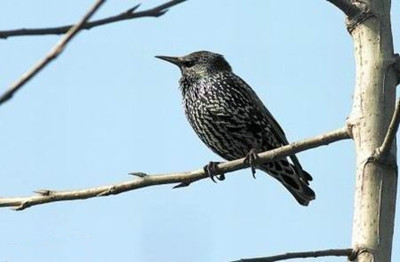This is Scientific American — 60-Second Science. I'm Emily Schwing.
Washington state is the country's largest producer of cherries and blueberries. The state's wine industry is second only to California's in value. But one non-native, nuisance bird is wreaking havoc.
[Sound of starling call.]
The European starling was brought to North America more than a century ago, by unwitting naturalists who wanted to introduce all the birds mentioned in Shakespeare's plays. Today, the starlings do hundreds of millions of dollars' worth of damage to Washington's crops. But one man has taken it upon himself to get rid of the birds—without killing them.
"We're not terminators. Our job description would be more like security guards."
Vahé Alaverdian, raptor wrangler. It's barely 6 A.M., but he's been out in a field of cherry trees in Yakima Valley since much earlier. He's working with a Peregrine falcon.
And as long as the falcon flies over these fields, fruit-loving birds like robins, finches and starlings will not. Fourth-generation fruit grower Mark Roy estimates Alaverdian's raptors save him a thousand dollars a day in otherwise lost produce.
"So, I mean it pays to come and to scare the birds away."

Birds of prey work where other traditional methods of bird abatement—like scarecrows, pyrotechnics and netting—fail. Alaverdian says even the most modern technology is no match for problem birds like starlings.
"People said 'oh, we're going to put you out of business. We've got drones, we're going to program these drones and then we'll fly them over blueberries.' And then what?"
Eventually, he says, starlings get used to the drones.
"It's just not something they're genetically programmed to avoid. It's good for 48 hours and then you need another tool."
Modern tools can decrease fruit damage to thirty percent, but Alaverdian says one client at a Vineyard in California has seen falconry bring that down to between five and seven percent.
It's a tried and true taloned tool, that protects even the lowest hanging fruit.
Thanks for listening for Scientific American — 60-Second Science Science. I'm Emily Schwing.












